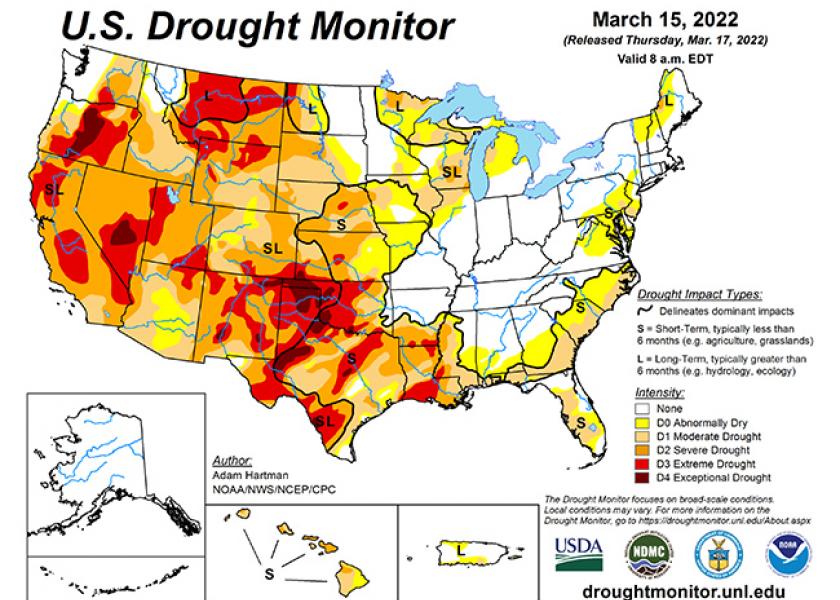Winter wheat drought area holds steady

The amount of U.S. winter wheat considered in drought conditions stayed at 73% for the week ended March 15, according to the U.S. Drought Monitor. USDA said winter wheat drought was 18% “moderate,” 32% “severe,” 20% “extreme,” and 3% “exceptional.” Last week, USDA rated winter wheat drought as 19% “moderate,” 33% “severe,” 18% “extreme,” and 3% “exceptional."
For HRW areas, the area considered abnormally dry/drought in Kansas (99%), Oklahoma (92%), Texas (96%), Nebraska (100%), Montana (89%), South Dakota (82%) and Colorado (100%) remained the same.
In SRW areas, the abnormally dry/drought area in North Carolina decreased by 8 points to 58%. Illinois (28%), Missouri (36%), Michigan (53%), Arkansas (41%), Ohio (0%) and Indiana (0%) had the same percentage of area considered abnormally dry/drought as the previous week.






